I have recently started reading the internet editions of Sindhi newspapers and I find the standard of journalism there at par, if not better than Urdu and English. While Urdu and English media gets all the attention, Sindhi press is lesser recognized.
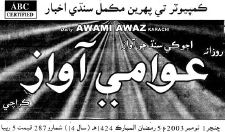
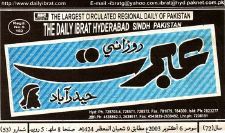
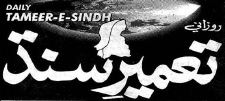
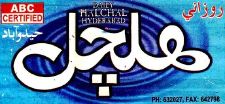
Sindhi newspapers cover all those items that one finds in national newspapers. Besides ‘aham khabrooN’ (important news), ‘wadheek khabrooN’ (more news) we can find business news, Showbiz, Sports, Editorials, cartoons, feature articles etc all in Sindhi newspapers. One obvious contrast between Urdu, English versus Sindhi newspapers however, is the news prioritization. Sometimes the headlines on Sindhi newspapers find a small place on back page of national dailies and vice versa.
On Irrigation Water Issues
One topic which I have consistently found appearing in bold in Sindhi newspapers is about the irrigation water. While Urdu press does not mention irrigation issues unless there is a flood or severe drought, water flow measurements at Sindh barrages make regular appearence in Sindhi news. Every few days I see a news item showing concern on depleting water levels at Guddu, Sukkur and desert like conditions downstream of Kotri. It shows that sharing of river water is a matter much more serious for Sindh than it gets its share on national media. This issue gets such a unanimous support in Sindhi press that I have not yet seen a single editorial in support of building new dams like Kalabagh etc. My guess is that in coming years, water sharing will become a major problem among provinces.
Who reads Sindhi Newspapers?
I believe the newspapers are alive and thriving because Sindhi is loved by the people who speak it and they prefer to get their news in Sindhi. Then there is another group of people whose mother tongue is not Sindhi but they like to read Sindhi newspapers in order to understand the regional perspective. I belong to this second group of people.
Sindhi newspapers also cater to the strong currents of Sindhi nationalism present in Sindh province.

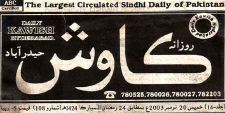


The Sindh-Punjab Equation
Another thing which I have noticed in Sindhi newspaper is their stress on the Sindh-Punjab comparison. It is not a secret that smaller provinces feel that they have to compete with the larger province in every social and economic field to maintain their historical and current provincial identity. This feeling is reflected in provincial newspapers also where almost all Sindhi newspapers try to dwelve on Sindh-Punjab comparison or try to show the picture where smaller provinces are not being treated fairly.
There is a strong need of bringing Sindhi and other provincial issues at National level to build consensus on them which in turn will strengthen national harmony. Currently many hot issues brew up and remain hidden from people in larger cities because Urdu and English media does not cover them as well as Sindhi newspapers do. Translating important news from Sindhi to Urdu/English and getting them prime real state on National dailies is the need of the hour. Here I must mention that the daily Dawn does give a weekly review of Sindhi newspapers in its features section.
Current State of Sindhi Press
More than fifteen daily Sindhi newspapers are published in Pakistan with Hyderabad being the largest center of such publications. Karachi and Sukkur follow suit. Largest circulation belongs to Kawish.
Ibrat newspaper has a leaning or a soft corner towards Pakistan Peoples Party. It is circulated more among politically conscious readership. Kawish on the other hand is more of an awami(public) newspaper and has a larger circulation. Kawaish has recently ventured into TV media also and KTV channel belongs to them.
Brief History of Sindhi Press
 The pioneers of journalism in Sindh were the Persian language newspapers. First Persian language newspaper started in Sindh in 1855. Its owner was Mirza Mukhlis Ali. In 1860, Mirza Mukhlis started a bilingual newspaper from Sukkur which printed one column in Persian and the other column contained its Sindhi translation. This newspaper was called ‘Matla Khursheed’ and is considered as the first Sindhi newspaper of the subcontinent. Matla Khursheed continued to publish until 1910.
The pioneers of journalism in Sindh were the Persian language newspapers. First Persian language newspaper started in Sindh in 1855. Its owner was Mirza Mukhlis Ali. In 1860, Mirza Mukhlis started a bilingual newspaper from Sukkur which printed one column in Persian and the other column contained its Sindhi translation. This newspaper was called ‘Matla Khursheed’ and is considered as the first Sindhi newspaper of the subcontinent. Matla Khursheed continued to publish until 1910.
The first Sindhi only newspaper was called ‘Moin-ul-Islam’ and it started its circulation in 1880. This was followed by various other papers such as Sind Sudhar, Muawan Majma, Saraswati, Aftab Sind, Kher Khoah, Musafir and Al Haq
The second period of Sindhi Journalism began with the publication of Al Hilal in 1901. The first Sindhi daily called Sind Wasi came out in 1908 and the second Hind Wasi in 1917. During this period a number of important papers were brought out which included Al Kashif, Al Ameen, Tauheed, Sitara-e-Sind and Subah Sind. This period culminated with publication of Al Waheed, the greatest Sindhi newspaper to date which was not only a newspaper but a movement and played a leading role in the establishment of Pakistan. Sheikh Abdul Majid Sindhi, Maulana Din Mohammad Wafai, Prof. Din Mohammad Alig, Pir Ali Mohammad Rashidi and Kazi Abdur Rehman were some of the stalwarts of journalism at the time who with their pens raised the consciousness of the people and made them aware of their rights.
Hilal-e-Pakistan began publication in 1946 at Hyderabad. It also mobilized people in favor of Pakistan. Hilal-e-Pakistan is probably the only Sindhi newspaper which has offices in Islamabad and Lahore also.
After independence of Pakistan several new papers came into existence, including Naeen Sind, Mehran, Azad, Nawai Sind.
List of current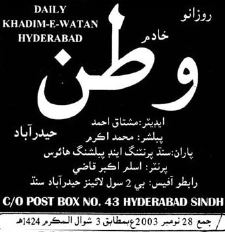 Sindhi Newspapers
Sindhi Newspapers
- Kawish, Hyderabad
- Ibrat, Hyderabad
- Hilal-e-Pakistan, Hyderabad
- Khadim-e-Watan
- Mehran, Hyderabad
- Awami Awaz, Karachi
- Nai Zindagi
- Parish
- Udhar
- Gulful
- Halar
- Sham
- Koshish
- Tameer-e-Sindh
- Halchal
- The Daily Nijat: Sukkur, Karachi
Reference:
(1) Material for “Brief History of Sindhi Newspapers” has been taken from an article “Sindhi Press in Pakistan” written by Shahida Mirza
(2) ‘aaj ka Sindh’ by Mahmood Mirza.




















































Owais, if you are a non-Sindhi speaker as you wrote earlier, then it is very admirable that you follow the Sindhi press… We have seen enough evidence on Pakistaniat that there are people geniunely interested in wanting to understand problems that are close to inhabitants of the Sindh province…We as Sindhis have done a pretty lousy job to have public issues known to non-Sindhis. Younas has mentioned that some Sindhi newspapers have offshot cable channels like KTN, Kashish but somehow these two channels have fallen into the trap of perpetuating stereotypes in the form of violent wadera drama shows & cheezy pop songs. Sindh TV is pretty decent and investigative journalism of top quality and so direct in their approach that it is painful to watch abject poverty in remote villages in the province…. but thanks for reminding me of a promise made to my father, who was associated with the sindhi press in the 70’s that I translate an article that appeared in the Kawish last year… It is a fairly long and detailed write-up and the first few paragraphs are posted on my blog
Author did not mention kavesh tv off shoot from kavesh Daily newspaper, Kavesh TV is bridging the gap between pakistanis and Indian Sindhis ,millions of hindu sindhis are living in india, they still consider their identity as sindh. their love for jhollay lal, and shah latif.
we can spread message of love to them
thank you for the article – very informative.
the article makes a very important point. these issues that are currently being covered extrensively by the regional press need to be given due attention by the press -both english and urdu. this will allow a more well-informed debate on water-related and other issues at the national level.
at the same time, the regional press should look beyond a one-dimensional punjab versus sindh focus which charts every issue in reductionist terms.
The onus is on the people from Punjab to try to understand the issue with the perspective of other provinces as well instead of blindly following the federal government.
I wish some of these Sindhi writers could write for National press in order to highlight Sindh’s water problems.
I wish people in Punjab could read Sindhi newspapers. We mostly look at Pakistan from Punjabi or Karachi perspective and do not get the correct picture of the problems and issues in the country.
You have mentioned the importance the Sindhi newspapers give to the readings of water flow in the rivers. That should give us some idea of why Sindhis are so much against the Kalabagh and other dams.